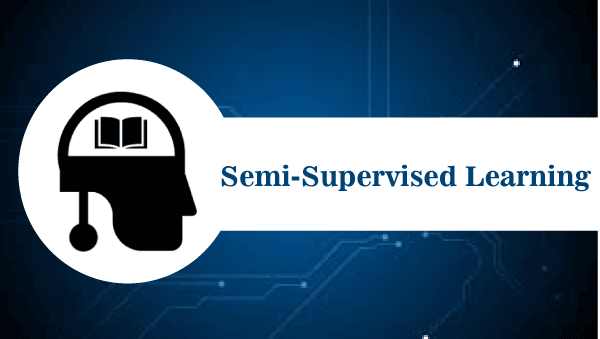Introduction to Semi-Supervised LearningSemi-Supervised learning is a type of Machine Learning algorithm that represents the intermediate ground between Supervised and Unsupervised learning algorithms. It uses the combination of labeled and unlabeled datasets during the training period. 
Before understanding the Semi-Supervised learning, you should know the main categories of Machine Learning algorithms. Machine Learning consists of three main categories: Supervised Learning, Unsupervised Learning, and Reinforcement Learning. Further, the basic difference between Supervised and unsupervised learning is that supervised learning datasets consist of an output label training data associated with each tuple, and unsupervised datasets do not consist the same. Semi-supervised learning is an important category that lies between the Supervised and Unsupervised machine learning. Although Semi-supervised learning is the middle ground between supervised and unsupervised learning and operates on the data that consists of a few labels, it mostly consists of unlabeled data. As labels are costly, but for the corporate purpose, it may have few labels. The basic disadvantage of supervised learning is that it requires hand-labeling by ML specialists or data scientists, and it also requires a high cost to process. Further unsupervised learning also has a limited spectrum for its applications. To overcome these drawbacks of supervised learning and unsupervised learning algorithms, the concept of Semi-supervised learning is introduced. In this algorithm, training data is a combination of both labeled and unlabeled data. However, labeled data exists with a very small amount while it consists of a huge amount of unlabeled data. Initially, similar data is clustered along with an unsupervised learning algorithm, and further, it helps to label the unlabeled data into labeled data. It is why label data is a comparatively, more expensive acquisition than unlabeled data. We can imagine these algorithms with an example. Supervised learning is where a student is under the supervision of an instructor at home and college. Further, if that student is self-analyzing the same concept without any help from the instructor, it comes under unsupervised learning. Under semi-supervised learning, the student has to revise itself after analyzing the same concept under the guidance of an instructor at college. Assumptions followed by Semi-Supervised LearningTo work with the unlabeled dataset, there must be a relationship between the objects. To understand this, semi-supervised learning uses any of the following assumptions:
Working of Semi-Supervised LearningSemi-supervised learning uses pseudo labeling to train the model with less labeled training data than supervised learning. The process can combine various neural network models and training ways. The whole working of semi-supervised learning is explained in the below points:
Difference between Semi-supervised and Reinforcement Learning.Reinforcement learning is different from semi-supervised learning, as it works with rewards and feedback. Reinforcement learning aims to maximize the rewards by their hit and trial actions, whereas in semi-supervised learning, we train the model with a less labeled dataset. Real-world applications of Semi-supervised Learning-Semi-supervised learning models are becoming more popular in the industries. Some of the main applications are as follows.
|
 For Videos Join Our Youtube Channel: Join Now
For Videos Join Our Youtube Channel: Join Now
Feedback
- Send your Feedback to [email protected]
Help Others, Please Share









